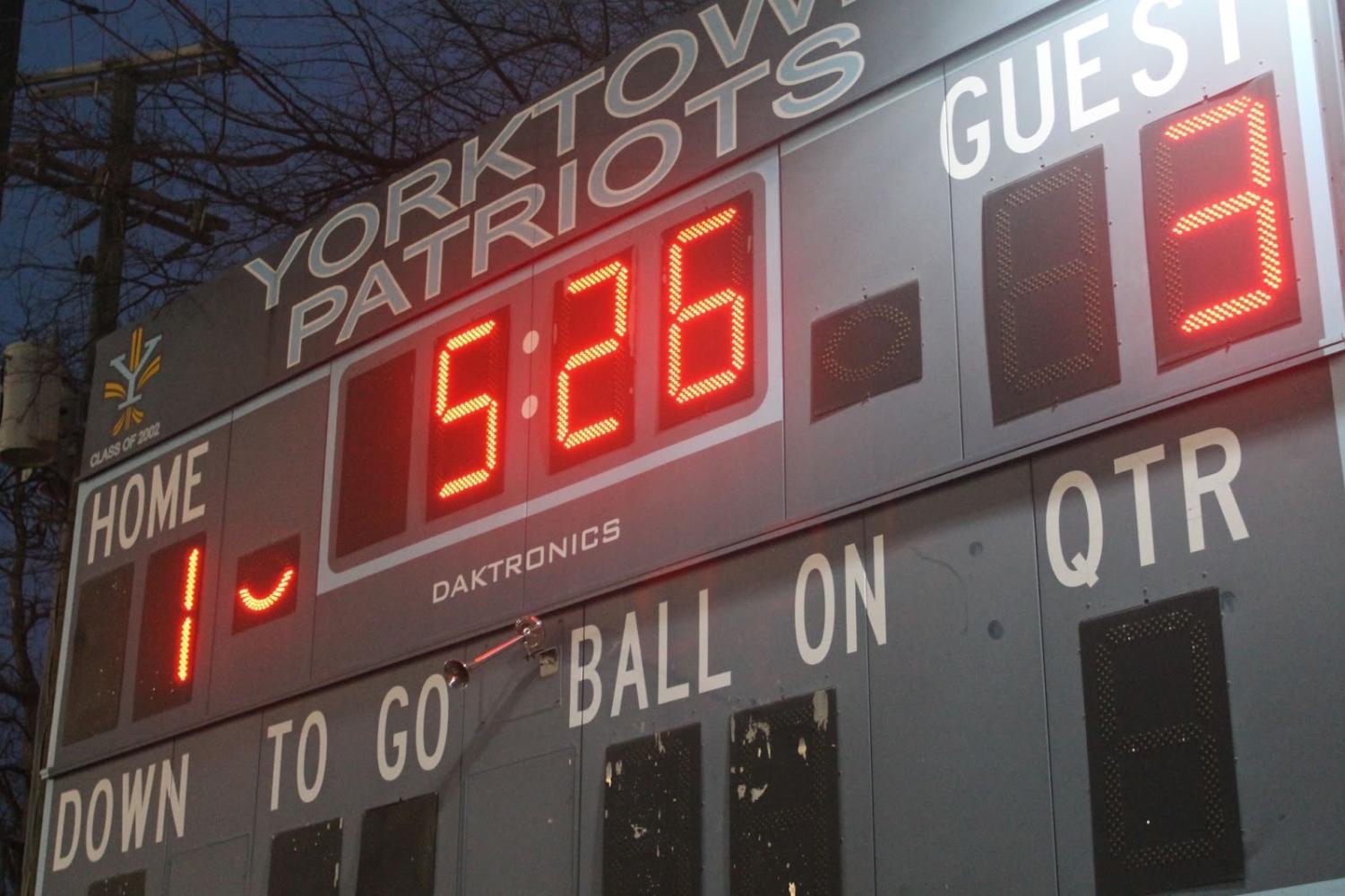Until recently, a replacement for the dim, nearly twenty-year-old scoreboard at Greenbrier Field seemed anything but likely. The Yorktown Boosters, however, have teamed up with Wakefield and Washington-Liberty in an attempt to rally momentum around the movement for fully digital boards at all three of Arlington’s public high schools. In a recent Youtube video by the Yorktown Boosters, representative Mike Morgan outlined key details about the costs, installment and fundraising aspects of the new boards.
According to Morgan, the Boosters and parents must first decide to replace the current boards with simpler, newer models, or go all in for the pricey, fully digital boards. The capital budget for the scoreboard can provide for the simple replacement, but has nowhere near the capacity to cover all of the expenses associated with the digital boards.
These digital media boards are essentially one-sided jumbotrons, and they have an extremely broad functionality. They can display video footage of the current game as it happens, profile student-athlete accomplishments, highlight other events and student activities at the school and advertise sponsors.
The advertising aspect is one of the key arguments for the new boards; even though the digital scoreboards are significantly more expensive, their ability to raise revenue through advertising can be used to pay off the boards and bring in money for athletics long after the costs have been covered.
Hard numbers for the price of each media board and its installation is estimated at $100,000-120,000. According to the Boosters video, that cost falls under two parties; Arlington Public Schools can contribute about $20,000, and the Boosters would have to gather an additional $30,000 to place the order for the new board. Once the order is placed, the board would need another $50,000-70,000 in financing before its installation.
Despite this significant burden, the Boosters have emphasized the long-term revenues that the media boards provide with their advertising capabilities.
“Preliminary estimates project that we can pay off each board within four years from initial install[ment]. Revenues would initially be prioritized to pay for all the boards across the schools. Subsequently, revenues would be split amongst the Boosters clubs of each school,” Morgan said in a slideshow presentation on the Boosters Youtube channel.
The actual application of this revenue model is broken down by Morgan as a mixture of static and video advertisements. Not including track and field or cross country, there are 84 home games per school. This statistic includes all levels of football, field hockey, girls and boys lacrosse and girls and boys soccer. In order to liquidate the debt posed by the media boards in just four years, ad revenues must average $200 per home game for each school.
Even if the Boosters had enough money to purchase the boards right now, the company’s schedule is booked through the fall of 2022.
“Right now our best case scenario for being able to get a board installed at Yorktown as it relates to the manufacturer is next spring,” Morgan said.
The digital boards will require tremendous effort from the parents and Boosters of APS alike to turn their vision into a reality. With these boards, the schools would be able to raise revenue for future athletic programs, broadcast live footage, replays, athlete profiles and highlight non-athletic achievements at each of the respective schools. Although the goal is a lofty one, the Boosters have started the engine to get the project moving.







































